How to feed rabbits and how to do it correctly
How to feed rabbits to keep them healthy and gain weight normally? This question is asked by both novice farmers and owners of decorative pet animals.
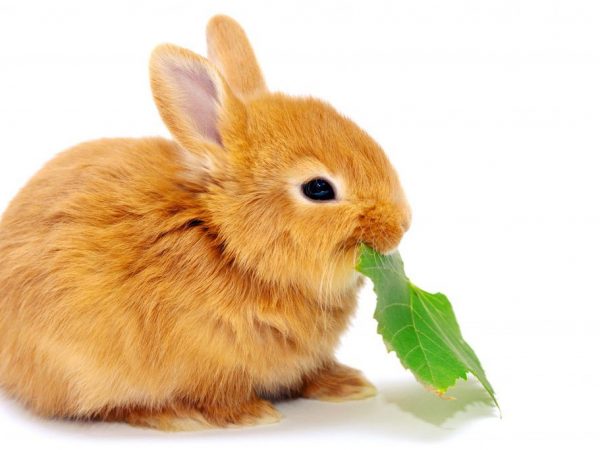
What to feed rabbits
The food for rabbits should be varied. The diet includes green, concentrated feed, salt and vitamin supplements. Summer and winter menus are also different. Especially carefully they select food for pregnant rabbits and females after birth, young rabbits.
The main types of feed and nutritional rules
What are rabbit foods? In terms of structure and nutritional value, they are divided into several categories:
- green;
- rough;
- juicy;
- concentrated.
It is necessary to combine different types of rabbit feed with each other in the correct ratio. It depends on the time of day and season. Also, the types of feed change at different periods of the rabbit's life. Here are some tips on how to feed your rabbits properly at home:
- Rabbits have weak peristalsis, food passes completely through the digestive tract only when a new portion arrives, therefore access to some feed (hay, branches) should be around the clock.
- It is important to provide round-the-clock access to fresh water. This is especially necessary for a nursing rabbit so that she has enough milk for the rabbit.
- Healthy foods rich in fiber should make up 2/3 of the entire menu.
- Rabbits should not be given food with a large amount of simple carbohydrates: they cause obesity, and feline rabbits can have a miscarriage from such food.
- When using several types of feed at one time, you should first give concentrated, and then - juicy with vegetables, coarse or green.
- New food is introduced gradually over 5-7 days.
- To keep your pets healthy, they should be fed only high quality and fresh food.
- All food is poured exclusively into special feeders so that the animals do not trample them.
- Rabbits often scoop and eat their droppings. Don't be scared, this is a normal process. The litter contains a lot of B vitamins produced by bacteria and necessary for animals.
As you can see, feeding rabbits is not difficult. Even a novice farmer can follow simple rules.
Diet formulation and feeding regimen
Before explaining how to feed domestic rabbits, you should talk about the correct compilation of the menu. Only balanced types of food will help the animals grow quickly, gain weight and stay healthy. The menus are compiled taking into account the content of nutritional ingredients, minerals and essential vitamins in the food.
They make up the feeding norms of rabbits, focusing on the following indicators:
- feed unit (corresponds to 1 kg of oats);
- digestible protein;
- phosphorus;
- calcium;
- sodium chloride;
- carotene (provitamin A).
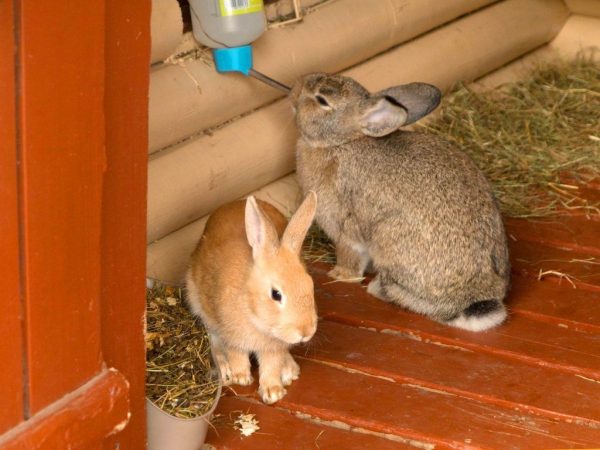
Making a menu for rabbits
In ordinary home conditions, it is difficult to calculate all the indicators; a ready-made table will come in handy for a novice farmer.It is important to remember that a small rabbit during a period of intensive growth requires more protein, just like a rabbit after birth. Meat and fur rabbits eat less protein.
How to feed rabbits properly at home and how often? Use schemes and a regimen of feeding rabbits with 3 or 4 meals a day. The first type is suitable for adult animals, the second - for rabbits up to 4 months old. In the morning and evening, rabbits are given concentrated feed, dried hay (in winter) and grass (in summer). At lunchtime, it is best to feed the animals with juicy food. For dinner, they also give rough food in the form of branches or straw, useful compound feed.
Green feed
Green grasses and tops are the basis for summer feeding of both young and adult rabbits. It is best to harvest green fodder in the village, away from highways, roads and other sources of industrial pollution. You need to carefully choose the grass so that harmful plants are not caught. Rabbits happily eat sweet clover, timothy, plantain, yarrow, rape leaves and other meadow grasses. Suitable for animals alfalfa, clover, tansy phacelia, waca. It is strictly forbidden to give euphorbia, dope, thistle, buttercups, henbane, nightshade and other poisonous herbs. Mustard, onions can harm rabbits, you cannot feed them with garlic.
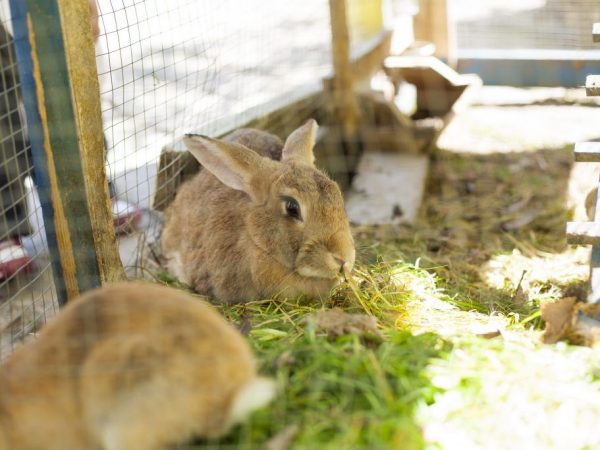
Green rabbit food
How to feed rabbits in the summer in the village? In addition to meadow grasses, plants from the garden or specially planted crops are suitable for them during this period. It is advised to feed the fluffy carrot, beetroot, rutabaga tops, cabbage leaves. But you cannot feed the animals with tops of tomatoes and potatoes: they are poisonous. Fodder and sugar tops have a laxative effect, so they can be fed to rabbits in limited quantities. The red beet and its tops should not be given to the animals at all. It is especially harmful for young animals.
Experienced rabbit breeders recommend planting vetch, lupine, clover, peas in the garden or in the garden. Legumes contain a lot of proteins, therefore they are used to feed a meat breed or a pregnant rabbit. Rabbits eat turnips and Jerusalem artichoke well. Chicory, thyme, dill, and other aromatic green herbs increase appetite, but they are given in small amounts. Before giving your pet this or that grass, you should check whether it can be fed to rabbits.
Roughage
What else can you feed rabbits at home in summer and winter? Approximately one fourth of the total ration is roughage. The rate changes from season to season, in winter roughage is almost a third of the entire menu. Animals are given tree branches, hay, straw, grass flour.
The rabbit eats such a healthy twig food superbly:
- willow;
- Apple tree;
- maple;
- poplar;
- Rowan;
- ash;
- oak;
- elm;
- pear;
- raspberries.
It is not recommended to give animals birch branches, lilacs, plums, cherries and other stone trees. Oak has fastening properties, therefore it is used in small quantities for feeding rabbits at home. Twig food for rabbits for the winter should be collected and harvested in June. They choose branches with a thickness of 0.7-0.8 mm, knit them in brooms and dry them in the attic. In winter, you can give the animals green conifers (pine, Christmas tree).
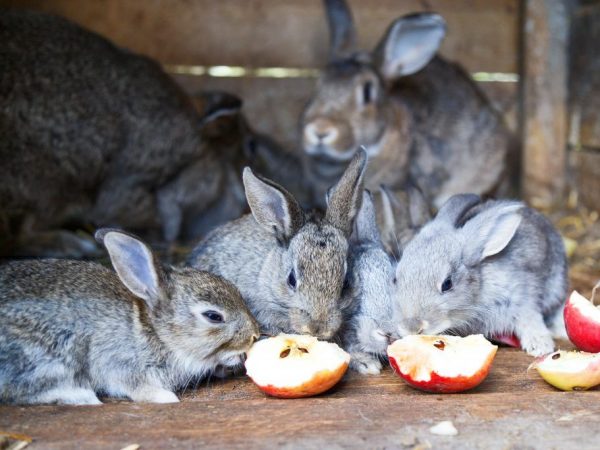
Roughage
In both summer and winter, pets are given hay. Plants are harvested for feed to rabbits just before flowering. Hay is dried directly in the meadow, if the weather is favorable. In rainy summers, it is better to dry the herbs under cover. For felted rabbits, you should stock up to 40 kg of hay for the winter, for the rest of the rabbits - 30-35 kg. You also need to provide a supply of food for the young, which will appear at the end of winter, because the rabbits need a lot of food during the period of intensive growth.
Juicy feed
Speaking about how and what to feed domestic rabbits, you need to remember about juicy food. These include root crops and silage, as well as kitchen vegetable cleaning.How much juicy food do animals need? In the winter menu, such food makes up almost half; in summer, juicy food partially replaces green grasses for rabbits. Root crops and silage contain a lot of vitamins, but little fiber, they increase the amount of milk in rabbits, which is necessary for feeding young animals.
Here are the main types of vegetables used to feed animals:
- Carrot. Contains carotene, vitamins B1, B2, C. They give raw carrots.
- Potato. A very nutritious and healthy product, it has a high starch content. They give boiled potatoes, mixed with bran, you can also add concentrated mixtures there.
- Cabbage. It has a lot of vitamins C and E, helps to improve the condition of fur and skins. They give cabbage fresh or sauerkraut.
- Sugar and fodder beets. Improves metabolism, immunity, protects against diseases. It is given raw or boiled, for young rabbits - no more than 200 g, for sexually mature - 300-400 g per day.
- Zucchini. Suitable for summer food for rabbits, quickly deteriorates. Zucchini is served raw. This plant is fruitful and cheap, often in the summer period there is nowhere to put zucchini, so they can be cheaply fed to rabbits.
- Pumpkin. Animals gain weight well on it, the condition of the fur improves, the amount of milk in rabbits increases, and other food is better absorbed. This product is especially useful during the growth of animals.
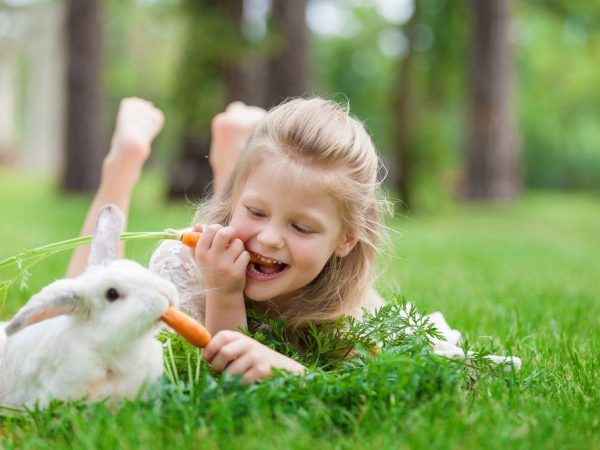
Succulent rabbit food
You can also feed rabbits with turnips, radishes, Jerusalem artichoke, watermelons, melons. But the nutritional value of these products is quite low. They do not fulfill either caloric or vitamin requirements, especially in winter.
How to prepare silage
Feeding rabbits with silage is most often used on large farms, but it is easy to prepare it at home on a small farm. For this, green herbs, melons and gourds mixed with tops, root crops are used. All components should be crushed and tamped well. After that, they are put into a special pit. Its depth can be 1.5-2 m, the walls should be made of cement or wood. Sometimes a wooden barrel is used instead of a pit. The ensiling process should take place without oxygen, it lasts 1.5-2 months.
The composition of the silage is different, everything that can be fed to the rabbit is mixed there. Here's an example of the most optimal mix:
- Legumes - 30-40%.
- Kale with carrot tops - 30-40%.
- Chopped carrot root - 10-20%.
- Boiled potatoes, soaked in water - 20-30%.
The rabbit eats fodder silage more often in winter. It replaces green herbs, partly roots. This useful product is simply necessary for foster and lactating rabbits, the growth of young rabbits. The fiber content in silage is higher than in other succulent forages, therefore it has a good effect on digestion.
Concentrated feed
What to feed rabbits to gain weight? Concentrated mixtures are best suited for this purpose. They have the highest calorie content and are well absorbed. In the cold season, when fresh herbs are not available, concentrated feed forms the basis of the diet. You can prepare the mixture yourself. It includes:
- grain (wheat, oats, corn cobs, barley);
- legumes (lentils, peas, beans);
- wheat bran;
- oilseed meal and cake;
- meat waste (meat and bone or fish meal), sour or skim milk.
In order for the animals to grow and recover well, it is best to feed them with oats, soybeans, peas, rye, a mash of cereals with legumes, and rapeseed. To make the grain better digested, it is soaked in water with yeast or germinated. The assimilation of such food is increased by 30%. It is also recommended to plant young rabbits as early as possible in different cages. If concentrated mixtures make up 30-40% of the entire menu, real giants grow out of rabbits.
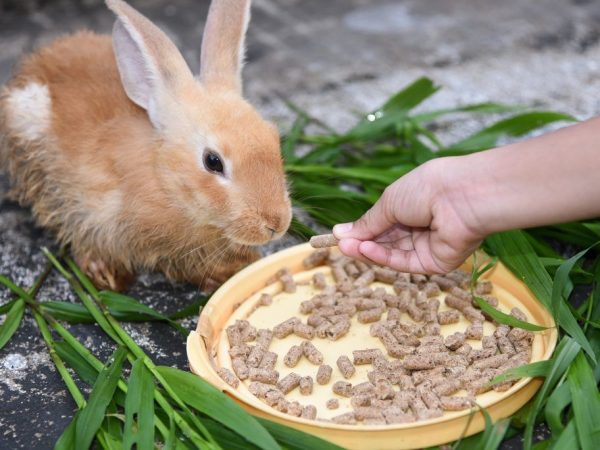
Concentrated Rabbit Feeding Mix
Concentrated feed for decorative rabbits is often bought in stores. The most famous brands:
- Versele-Laga "Cuni Nature";
- Versele-Laga ReBalance;
- Fiory;
- Little One (for young animals);
- Purina;
- Triol;
- Jr Farm;
- Premium Coniglietti;
- Sultan Prof;
- LoLo Pets;
- Vitapol;
- South crown;
- Crispy;
- Provimi.
The best feeds are Versil Laga Rebalans, Purina, Fiori, Triol, Sultan Prof, Lolo Pets, Vitapol dry food for rabbits. If a decorative rabbit eats properly, it does not get sick and can live up to 7-8 years. For industrial animals, concentrated feeds PK-91 (for young stock 1-6 months), PK-93 (for fattening for meat) are recommended. What rabbits should not be fed is poultry feed. They do not contain all the substances that animals need. How much ready-made compound feed to give is written on the package.
Rabbit pellets
Concentrated feeds are often sold as pellets. It contains all the necessary components. Granules consist of grain, legumes, meat and bone and herbal flour, minerals with vitamins. Granules can be prepared with your own hands, but for this you need to have a special device - an extruder. It resembles a large meat grinder with a press and heating. The cooking technology is simple, it is enough to fill the device with all the components and turn it on. After a while, ready-made compressed granules will appear from the special holes.
The composition of the pellets is different, including everything that can be fed to rabbits. For their preparation at home, they use wheat with oats and bran, corn grain, barley, rye, green grass with tops and hay, root crops with vegetables, soybean meal and sunflower cake. Here's a pretty simple recipe for making rabbit food at home for quick weight gain:
- Grass flour with hay - 40%.
- Barley grain, which can be replaced by oats - 30%.
- Wheat, which is often replaced with bran - 55.
- Sunflower cake - 10%.
- Peas - 8%.
- Yeast - 2%
- Meat and bone meal - 1.6%.
- Phosphate - 0.6%.
- Common kitchen salt - 0.3%.
Extruded feed is easy to fully provide nutrition for rabbits, no matter how many heads there are on the farm. Granules are harvested every 3-4 weeks, stored in a dry and dark place. Pellets are best used in winter, but can also be used to feed meat rabbits in summer on large farms. The consumption of pellets per rabbit is small. Even with the high cost of compound feed, it fully pays for itself. If you make pellets yourself, the cost of meat and skins will be even lower.
Minerals and vitamins in the diet
If we talk about feeding and special food for rabbits, the issue of mineral and vitamin supplements cannot be ignored. They need to be included in the diet even when young and adult animals are fed with hay, vegetables, fresh green grass. Vitamins and minerals are needed for fast weight gain, improving the condition of the coat, and preventing diseases.
The simplest mineral supplements are salt and chalk, as well as fish and meat and bone meal, which contain a lot of phosphorus and calcium. The norm of salt is 3-5 g per day, other mineral supplements - according to the instructions. Modern livestock breeders prefer to use ready-made combined complexes. All components in them are balanced and fully meet all the needs of animals. Eeyore grows quickly and feels great. Here is a list of the most popular pre-made mineral salt and vitamin preparations:
- DL-Methionine;
- Prodekit;
- E-selenium;
- Eeyore.
The little rabbit is growing rapidly, the daily feed rate does not fully satisfy its need for some vitamins, therefore, small animals must be given useful fish oil (contains vitamin D, which is necessary for the development of the skeletal system and muscles, and vitamin A). How much fish oil should be given to animals? The norm for one head is 0.3-0.5 g. Adults should also be given this supplement in an amount of 1 g per head, and for fawn and giving birth rabbits - 3 g each.
Feeding young
The feline rabbit carries babies for about a month.In a litter, there may be 2-3 rabbits, and 8-10 small animals. From the first days the young are fed with milk. The female who has given birth needs to be properly fed and watered a lot. If babies have enough milk, they are calm and recover quickly. When the mother does not have enough milk or she refuses to feed the offspring, artificial feeding is used.
How to feed small rabbits properly? If the female's lactation is poor, you can drink the young from the bottle. Common milk formulas, diluted cow's or goat's milk are used. The baby rabbit eats 5 times a day. The first feed should be done early in the morning at 6 pm and the last at 11 pm. The night break is 8 hours.
After 20 days, the little rabbit is gradually transferred to adult feed. First they give him a carrot, salad leaves, then add cabbage, a mixture of boiled potatoes with bran. About a month, concentrated feed is included in the diet, at the same time young animals are fed with hay. Cubs are removed from the mother at 25-45 days. With early jigging, the female quickly begins hunting and a new pregnancy. But after frequent childbirth, the rabbits are quickly depleted.
Monthly rabbits are also fed vegetables, hay, bran, and grain. Be sure to feed with salt, chalk, fish oil and vitamins. You can give rabbits branch feed, cake and soybeans, grain and grass granules. At 2-3 months, males and females are selected for further breeding. The rest of the animals are raised with intensive feeding, so that in 4-5 months, depending on the breed, they can be sent for slaughter.
So, we looked at what rabbits are fed at home. If you adhere to all the rules, follow the diet and properly care for the animals, you can get a good offspring and weight gain without loss. When the feeding of the rabbit is wrong, it gets sick, the death of young animals is observed, the farm suffers significant losses. To better navigate, you can watch a video of how to feed domestic rabbits.

